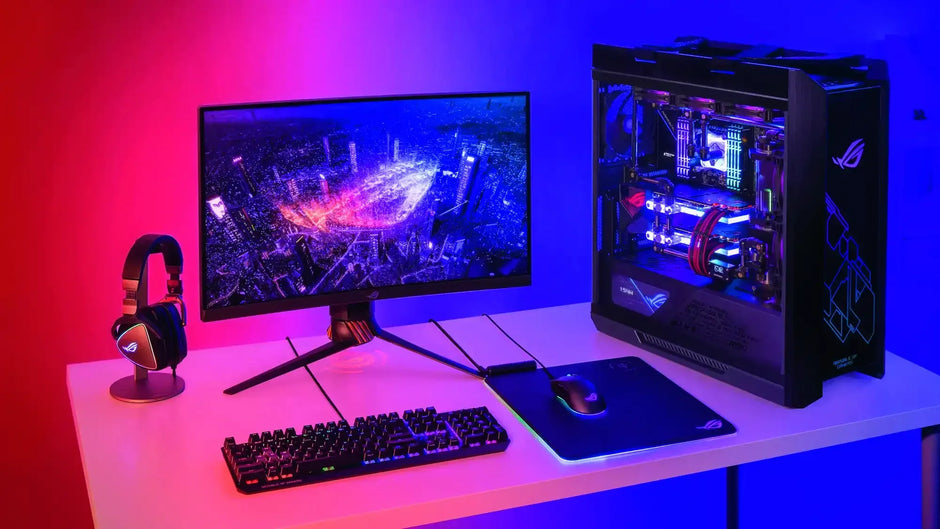Introduction In today’s digitally driven world, the backbone of any successful business is its network infrastructure. A well-optimized network not only ensures smooth daily operations but also secures critical business data and provides a scalable foundation for growth and innovation. However, managing this crucial asset involves more than just periodic maintenance—it requires a strategic approach to network management and the deployment of robust hardware solutions.
This blog aims to guide you through the best practices for optimizing your network infrastructure and recommends the most effective hardware to ensure performance, reliability, and security.
Understanding Your Network’s Needs
Before diving into optimization techniques, it's vital to assess your existing network setup. Understanding your network's specific requirements helps in crafting a tailored optimization strategy. Key factors to consider include bandwidth needs, number of network users, types of applications running, and future scalability. For instance, a high-traffic e-commerce site will have different bandwidth and security demands compared to a small local business.
Employing network analysis tools can provide a comprehensive view of your network's performance and pain points. Tools like Wireshark for network protocol analysis or SolarWinds Network Performance Monitor can help diagnose issues and understand traffic flow. This initial assessment forms the basis for all subsequent optimization efforts, ensuring that they are precisely aligned with your network’s operational requirements.
Best Practices for Network Management
Optimizing a network involves several key practices that enhance functionality and security:
Network Segmentation: Dividing the network into smaller segments can significantly enhance performance and security. Segmentation isolates network traffic, which can contain security breaches within a segment and reduce the overall impact on the network.
Regular Updates and Patch Management: One of the simplest yet most overlooked aspects of network management is ensuring all hardware and software are up-to-date. Regular updates fix vulnerabilities that could be exploited by cyber attackers and optimize the performance of your network devices.
Traffic Monitoring and Control: Keeping an eye on your network traffic is essential for both security and performance. Tools like NetFlow or sFlow can help you monitor traffic and identify unusual patterns that might indicate a cyber threat or a network malfunction.
Redundancy and Failover Strategies: Implementing redundancy in key network components, like routers and switches, ensures there is no single point of failure. Failover systems automatically switch to a redundant backup component to maintain network availability in case of a hardware failure.
Hardware Recommendations
Choosing the right hardware is crucial for a high-performing network:
Routers and Switches: Opt for enterprise-grade routers and switches that support advanced features like virtual LANs (VLANs) and network segmentation. Brands like Cisco, Juniper, and Hewlett Packard Enterprise offer products that provide robust performance and extensive support.
Firewalls: A robust firewall acts as the first line of defense against external threats. Consider options like Fortinet or Palo Alto Networks, which offer comprehensive security features including intrusion prevention, web filtering, and advanced threat protection.
Wireless Access Points: For businesses requiring wireless coverage, select access points that can support your bandwidth needs and user count, such as those from Ubiquiti Networks or Cisco Meraki. These devices offer centralized management and advanced security protocols to safeguard your wireless traffic.
Network Interface Cards (NICs): High-quality NICs can significantly increase the data transfer rates between network devices. Look for NICs from reputable manufacturers like Intel or Broadcom that support high speeds and have good driver support.
Advanced Technologies to Consider
To future-proof your network, consider integrating advanced IT hardware:
Software-Defined Networking (SDN): SDN offers an incredible level of flexibility and control, allowing network administrators to manage network services through abstraction layers. This can simplify network design and operation, and dynamically adjust to changing business needs.
Network Functions Virtualization (NFV): NFV transforms hardware functions into software-based solutions, which can rapidly scale up or down as required. This not only reduces hardware costs but also increases the speed of deployment of new network services.
Artificial Intelligence and Machine Learning: These technologies are being increasingly deployed to predict network failures, automate routine tasks, and optimize traffic routing based on real-time data analytics.
Implementing Security Measures
Securing your network is paramount:
Virtual Private Networks (VPNs) and Encryption: Implement VPNs to provide secure remote access. Encryption should be standard across all transmitted data to prevent interception.
Multi-factor Authentication (MFA): MFA adds an extra layer of security by requiring multiple forms of verification from users before granting access to the network.
Regular Security Audits: Conducting regular security assessments can help identify vulnerabilities before they can be exploited. This includes penetration testing and the use of vulnerability scanners.
Preparing for the Future: Strategies for Future-proofing Your Network
To ensure your network infrastructure remains robust and capable of supporting future business growth, adopting a forward-thinking approach is essential. Start with scalable infrastructure design, which involves creating a network layout that can expand seamlessly as your business grows. This means investing in modular hardware and software solutions that can be easily upgraded or integrated with new technologies as they emerge. Such a design minimizes the need for complete overhauls and helps in managing budget constraints over time.
Equally important is the continuous training and development of your IT team. The tech landscape is perpetually evolving, with new challenges and innovations surfacing regularly. Providing your team with ongoing training in the latest network management techniques and technologies is crucial. This could involve regular workshops, certification courses, and exposure to cutting-edge developments in the field, ensuring that your personnel are not just keeping pace but are ahead of technology curves. This proactive approach not only prepares your network for future demands but also empowers your team to handle complex challenges, making your business more adaptive and competitive in the long run.
Conclusion
Network optimization is not a one-time task but an ongoing process that involves regular reviews and adjustments to adapt to new technologies, emerging threats, and changing business requirements. By following the best practices outlined and selecting appropriate hardware, businesses can ensure their network infrastructure supports their current operations and scales effectively for future growth. For those unfamiliar with the intricacies of network management, partnering with IT professionals can provide the expertise needed to optimize and secure network infrastructures efficiently.








